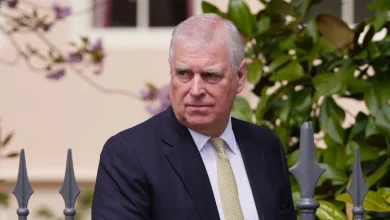‘Welcome to Derry’ Review: HBO’s ‘It’ Prequel Series Is the Wrong Kind of Clown Show

Despite their recent rise in prevalence, prequels are often a bad fit for television. Serialized TV is built for lengthy, evolving stories; stories that can grow from season to season; that can begin as one thing and end as something else entirely. Even episodic programs (your sitcoms, your procedurals) are bewitching for their innate boundlessness. They can go on forever, and knowing as much is comforting, intimate, and fun.
Prequels, on the other hand, have a definitive endpoint by definition and don’t allow much by way of transformation. Everyone knows where the story is going, and whatever growth takes place along the way needs to reach the predetermined maturity of what’s already known. Sterling exceptions certainly exist, but our ongoing age of I.P. has produced more misguided prequels than groundbreaking ones.
Still, for modern viewers lured to the latest series-long prologue to what they really want to watch, there is one modern benefit: You don’t have to stick around, waiting for it to get better. If a prequel’s first episode doesn’t live up to expectations, there’s no reason to believe later episodes, let alone seasons, will improve enough to win you back. After all, improvements require changes, and changes aren’t a luxury these pricey precursors can afford.
Fans of the “It” franchise should know whether “Welcome to Derry” is right for them within the first hour, perhaps sooner. The opening sequence — involving a scared little boy whose fear only accelerates during a nightmarish car ride — is a decent bellwether for the first five episodes (which is all that were screened for critics, of the eight total). Cheesy frights rely on cartoonish CGI and spewing blood to provoke imagery that’s memorable for the wrong reasons. The franchise’s iconic clown is nowhere to be found, replaced by one of the many toothless iterations of “It” our shapeshifting antagonist assumes instead. By the time a glistening pacifier flies out the window in slow-motion, it’s not awe or even curiosity that’s evoked by our welcome to “Derry,” but confusion accompanied by an uninvited chuckle.
If this is how “It” begins and we already know how “It” ends, must we wait around to watch what happens in between? And shouldn’t there be more to “It” than that?
Considering complaints about empty spectacle and improper Pennywise placement (Penny-unwise placement?) have dogged director Andy Muschietti since his first “It” feature terrorized theaters to the tune of $704 million in worldwide grosses, perhaps these red flags will only act as reassurance. If you liked “It” then, you’ll like “It” now — or so HBO hopes.
The network prioritizes franchise continuity by bringing back the director of both “It” chapters to develop, produce, and helm select episodes of “Welcome to Derry,” alongside his producing partner and sister Barbara Muschietti. Bill Skarsgård returns, too, reprising his role as the dancing clown while flexing his influence over all things “It” by snagging an executive producer credit, too. Co-showrunner Jason Fuchs is another movie import, having served as co-producer on “Chapter Two,” but balancing those filmic staples are a stable of TV veterans, including co-showrunner Brad Caleb Kane (“Tokyo Vice”), his writers’ room, and — most intriguingly — Oscar- and Emmy-winner Cord Jefferson (“American Fiction,” “Watchmen”), who’s officially on board as a consulting producer.
That last credit hints at the show’s bigger thematic goals, most of which skew closer to broad gestures than fresh insights — at least, so far. Whereas the original “It” films double as allegories for removing fear as an obstacle to growing up (assuming the kids can survive their increasingly dangerous childhoods to begin with), “Welcome to Derry” positions its titular 1962 town as America in miniature. Despite white residents dismissing concerns over racial prejudice because “this isn’t the South,” Black residents are presumed to be criminals, treated like pawns, and met with weary, skeptical glances wherever they go. Indigenous citizens don’t fare much better, as their perspectives are ignored and rights get dismissed. Meanwhile, Cold War anxieties allow the military to do whatever it wants, no matter the danger it brings to civilians. When a character in Episode 2 growls, “This ain’t America, this is Derry,” there’s no doubting they are one in the same.
This generalized recognition of our nation’s foundational sins is certainly welcome, it’s just not geared toward a particular point. (That, and the discordant storytelling’s oft-silly specifics tend to spoil the atmospheric dread tying “It’s” past to our present.) Perhaps the final three episodes will pull together a cogent statement or two, something beyond the trope of ostensibly idyllic small towns hiding monstrous truths behind their white picket fences. But the “It” films were content to stick with broadly recognizable interpretations — growing up is hard! FDR was right! all clowns are evil! — so why bank on anything more from the series?
‘Welcome to Derry’Courtesy of Brooke Palmer / HBO
Speaking of generalities and a lack of specifics, you may have noticed this review has yet to offer much by way of plot points. That’s because “Welcome to Derry” is shielded by spoiler embargoes, including much of the first episode (and, therefore, what happens after), which makes listing even the basic narrative a bit tricky. (HBO’s own logline is just a single sentence filled with keyword gobbledygook.) But here we go:
“Welcome to Derry” largely pivots around the Hanlon family. Leroy (Jovan Adepo) is an Air Force major with lingering physical and emotional scars from the Korean War. Charlotte (Taylour Paige) is a housewife who used to be active in the civil rights movement before Leroy grew concerned that his partner’s politics could cost him promotions. After moving to Derry, she looks after their son, Will (Blake Cameron James), while Leroy partakes in “special operations” with a uniquely talented (and uniquely trusted) soldier named Dick Hallorann (Chris Chalk).
If any of those names sound familiar, congratulations: You’re a Stephen King superfan. “Welcome to Derry” is well-stocked with Easter eggs, whether they tie directly to “It” (like, say, through the Hanlon family tree) or other stories with roots in the King of Horror’s favorite state. Trailers have tipped associations with “The Shining” and “The Shawshank Redemption,” but there are plenty more winks and nods to lore for those of you who care.
I, for better or worse, do not. Everything doesn’t have to connect to everything else, even in a prequel meant to evoke the satisfying snap of puzzle pieces coming together, and primary stories still need to be able to stand on their own. “Welcome to Derry,” very much for worse, does not. Despite being nicely fashioned by Oscar-winning production designer Paul D. Austerberry, the town’s origins are valued more than what’s going on within it — the former of which is trotted out in blunt stretches of exposition, and the latter of which is realized in clunky set-pieces that are meant to be scary but settle for icky. (Plus, “Castle Rock” already built a much better King-verse, and it still got axed.)
As much as I want to invest in Muschetti’s vision for a prequel series that moves backward through time — if greenlit, Season 2 would take place in 1935, while Season 3 would jump back another 27 years to 1908 — what’s shown in the here and now isn’t as apt or ambitious as the structural apparatus around “It.” Character inconsistencies, leaps in logic, foreseeable yet functional twists — these are forgivable flaws in a horror show that brings the horror, but “Welcome to Derry” can’t deliver where it counts.
What works about the movies — the believable kid behaviors, Skarsgård’s performance, and a steady stream of scares — isn’t what’s driving the show. Episodes strain to touch on those fan-favorite aspects almost as often as they work to expand the Stephen King universe from within (even incorporating a missing kid plot reminiscent of “It: Chapter One”). But an engine fueled by filling in the blanks isn’t built to last, and these dots, once connected, prove tacky and sour (especially without Pennywise, who’s notably absent for most of the season).
It’s almost as though the prequel isn’t equipped to handle significant change. Or it doesn’t want to. Either way, I wish I could say I was surprised — something in “Derry” should be.
Grade: C-
“It: Welcome to Derry” premieres Sunday, October 26 at 9 p.m. ET on HBO and HBO Max. New episodes will be released weekly through the finale on December 14.





